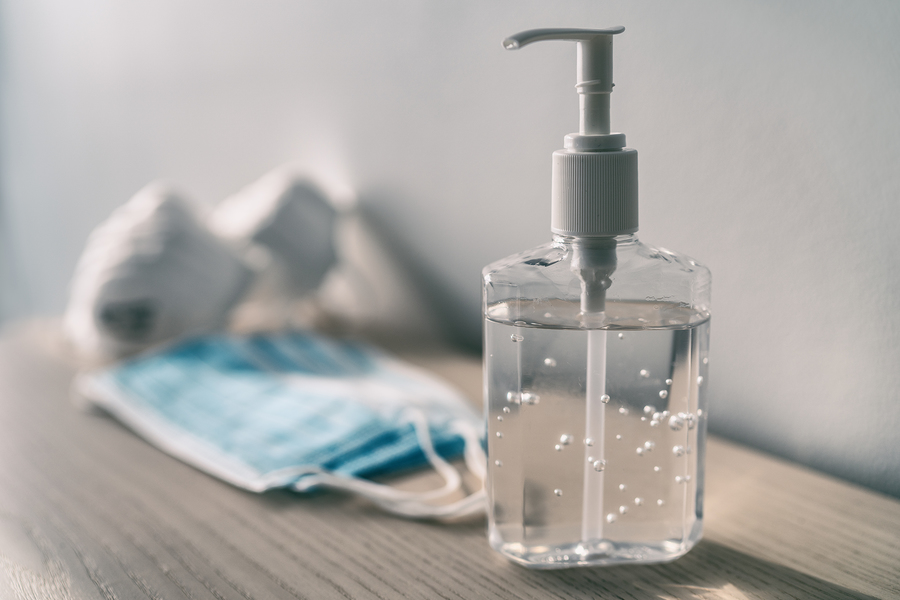Cleaners. Sanitizers. Disinfectants.
Although it might seem that cleaning, sanitizing, and disinfecting are all the same, there are differences between these terms. For the sake of this article, we’ll be focusing on sanitizer.
You can find sanitizers for a variety of applications and they’re all in high-demand right now, namely hand sanitizer. Due to demand, there are plenty of articles online sharing recipes for making your own hand sanitizer, but we’re dedicating this monthly How It’s Made feature to commercial hand sanitizer.
Before we get into it, if you’re curious about other hand sanitizer facts, we’ve found a few good website pages for you. The CDC showcases the science of hand sanitizers while Chemical & Engineering News outlines many, many details about hand sanitizer.
While the details and science of hand sanitizer are great, we at PMG really like the (very automated) manufacturing process.
What are the ingredients in hand sanitizer?
Key Ingredients:
Purified water and one of the following:
- Ethyl Alcohol/Ethanol
- Isopropyl Alcohol
- Benzalkonium Chloride
Fun fact: hand sanitizer needs to have an alcohol concentration of 60-95%.
Other Ingredients:
Without getting into the long, hard-to-say ingredients of hand sanitizer, we can classify their purposes into one of four categories:
- Provides moisturizers and conditioners
- Ensures the product tastes bad, should someone attempt to consume it
- Creates the gel-like consistency
- Adds fragrance and smell
Fun fact: you can find Marshmallow Pumpkin Latte, Fresh Sparkling Snow, White Peach Chardonnay-scented hand sanitizers. For real.
What to do with the ingredients?
Compounding
[av_image src=’https://www.pmgservices.com/content/uploads/2020/06/bigstock-Stainless-Steel-Tanks-Pipes-361282264.jpg’ attachment=’8283′ attachment_size=’full’ align=’center’ animation=’no-animation’ link=” target=” styling=” caption=” font_size=” appearance=” custom_class=”][/av_image]
Measure and add raw materials (according to formulas, recipes, and instructions) into large vessels called batch tanks, mixers, or compounders – this happens manually or automatically, depending upon the type of ingredient and the amount.
Forklifts bring materials/ingredients to the vessels in large drums or bags.
Mechanical agitators within these vessels mix the ingredients to very specific parameters, such as time and speed. Computer operations control these parameters.
Quality Control
[av_image src=’https://www.pmgservices.com/content/uploads/2020/06/bigstock-Side-view-close-up-of-the-hand-247696993.jpg’ attachment=’8285′ attachment_size=’full’ align=’center’ animation=’no-animation’ link=” target=” styling=” caption=” font_size=” appearance=” custom_class=”][/av_image]
Technicians draw samples from the compounding equipment to verify that the product is according to spec, including physical characteristics, viscosity, alcohol percentage, etc.
Next, technicians test samples to approve the batch.
If samples prove the product to be out of spec, technicians will make adjustments accordingly by adding ingredients and/or furthering mix operations.
After approval, the product goes into a holding tank until filling lines are ready for fill operations.
Filling, Capping, and Labeling
[av_image src=’https://www.pmgservices.com/content/uploads/2020/06/bigstock-Bottles-Filled-With-Yellow-Thi-187358293.jpg’ attachment=’8286′ attachment_size=’full’ align=’center’ animation=’no-animation’ link=” target=” styling=” caption=” font_size=” appearance=” custom_class=”][/av_image]
Mixed batches of ingredients go from the holding tank into filler equipment.
Note: Filling machines can vary in type according to consistency of the sanitizer (foam, liquid, gel etc.). As a whole, the main task of these machines is to disperse the mixed sanitizer into individual bottles.
At the start of a filling line, bottles are placed into a hopper that physically manipulates and moves them into their upright orientation appropriate for filling.
A carousel carries the bottles through the filling equipment for dispersal of the batched hand sanitizer.
The hand sanitizer disperses through piston filling heads, which dispense (i.e. squirt or shoot) the appropriate volume into each bottle squirt.
Once filled, bottles move into a capping operation which operates similar to that of the filling machinery. Caps come from a hopper, are oriented into the machines appropriately and then added and secured to the filled bottles on the carousel.
Once capping is complete, bottles are labeled through a heat-pressed application or with an adhesive.
Fun fact: this part of the production line is very fast, with some equipment operating at 200 bottles/minute!
Boxing and Palletizing
[av_image src=’https://www.pmgservices.com/content/uploads/2020/06/bigstock-Cardboard-boxes-arranged-on-a-313341088.jpg’ attachment=’8287′ attachment_size=’full’ align=’center’ animation=’no-animation’ link=” target=” styling=” caption=” font_size=” appearance=” custom_class=”][/av_image]
After filling, capping and labeling the bottles, workers place the new products in boxes. These boxes go on pallets for shipment immediately or storage.
Ongoing Quality Control
Quality control checks are ongoing throughout the entire process. They start at initial checks of raw ingredients, to batching operation samples, line inspection of machine operations and bottling components, sampling from the line for any microbial contamination and final inspection after bottling.
To see it all in motion, check out this video by Head & Shoulders. Although the product being manufactured is different in the video, you can apply the same operations to the production of hand sanitizer.
As a matter of fact, many personal hygiene companies have recently changed over their production lines from shampoo and conditioner to now manufacture hand sanitizer. And, they aren’t the only ones. Distilleries have done the same and if you’re interested in reading about that, start with this article on Entrepreneur.com. If that’s not enough, I definitely encourage you to check out a similar post on changes we’ve seen or will see soon (including procedures for sanitizing) in this previous PMG blog post.
Kim Mooney, Technical Manager & Coach








